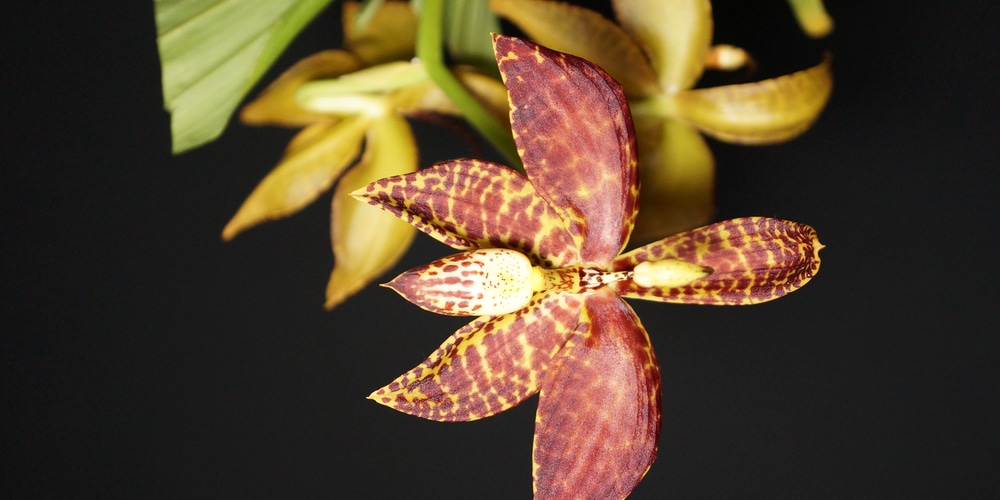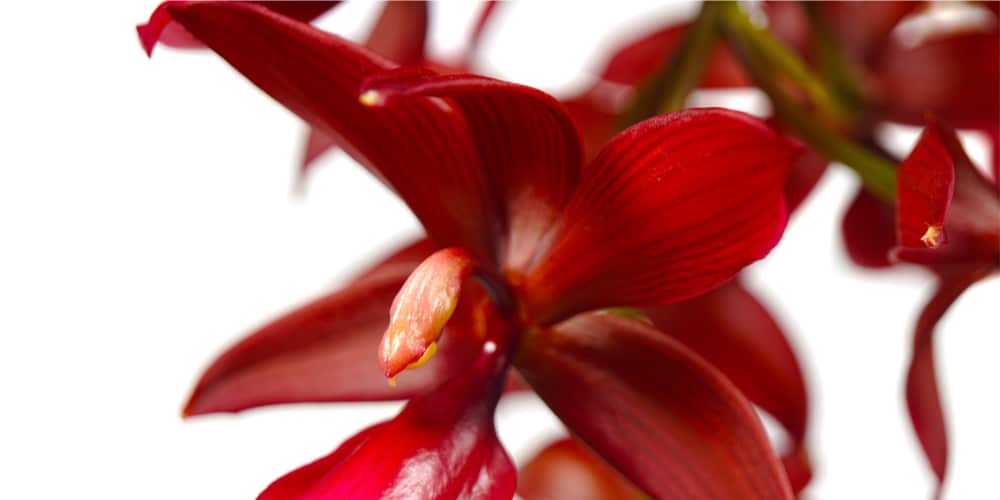If you’re an orchid enthusiast, you may be considering adding a Cycnoches Orchid to your collection. This popular orchid is more commonly known as the swan orchid. This plant gets its name due to its elegant flowers, which have long delicate flowers which are shaped like a swan. If you’re wondering how to care for swan orchids, follow the guide below, and you’ll be fine.
The swan orchid is native to South America and is most commonly found in Brazil, Bolivia, and Mexico. It’s a popular houseplant that is grown worldwide and can also be grown outside in the right climate. Swan orchids produce stunning flowers when provided with the correct care and attention. Let’s look at how to take care of swan orchids.
What is a Swan Orchid?

The Cycnoches or swan orchids are native to tropical regions of South America. These plants thrive in warm, humid climates and like to live in the moist canopies of tropical trees. The species is an air plant that can attach itself to trees in tropical forests or onto logs nearer the ground. The Cycnoches gets its name from the Greek words for swan and neck as the plant’s flowers resemble a swan.
Swan orchids require the right conditions to flower, and they produce male and female flowers. Watermelons grow male and female flowers too (just so you know) which can only be pollinated by a specific species of bee known as the Euglossine bee. In the wild, the swan orchid will drop seeds after pollination, and these will germinate at the beginning of the next growing season.
Swan orchids are also grown commercially across the world. They are propagated using the plant’s seeds or by collecting tissue culture. Horticulturalists are also able to propagate swan orchids by separating the pseudo-bulbs.
Cycnoches orchids get their name because their flower looks like a tiny swan with a long curved neck and tiny wings. Swan orchids bloom in various colors, including white, yellow, red or bronze, and sometimes even green. Most swan orchids will flower twice annually once they reach maturity at six months old. The plants will first flower in the fall season and will have a second blooming in the early spring.
Growing and Caring for Swan Orchids
Although swan orchids thrive outdoors in tropical rainforests, many Cycnoches species and man-made swan orchid hybrids can be kept indoors. One of the most popular varieties of swan orchid is the Cycnoches chlorochilon which has the largest flowers in the Cycnoches genus. These plants can produce flowers that have a radius of up to five inches. The flowers have a lovely vanilla scent.
Whatever type of swan orchid you plant to buy or grow, there are some tips that will help you successfully care for a swan orchid:
Buying a swan orchid
The first thing you should consider is where you’re buying your swan orchid from. Many DIY stores or florists sell swan orchids. Remember that orchids are delicate flowers, so be careful when taking your new orchid home. Plants can suffer from damage and even shock, they may become wilted, and the flowers can bruise, so take your orchid straight home after you’ve bought it rather than going on other errands.
Many florists offer delivery of orchids and other plants direct to your door. This may be a better solution if you want your flowers and plants to arrive looking fresh and lovely.
Some species of orchids can be quite expensive.
Light
Cycnoches orchids require brighter light and enjoy being in the sun for at least part of the day. These orchids can be grown on a windowsill or even outside if you live in a warm enough climate. In general, swan orchids need light that’s between 1000 and 3000 footcandles.
When grown in bright light, the female flowers will bloom. If, on the other hand, these orchids are kept in partial shade, the lower light conditions will encourage the plant to produce male flowers.
Water Requirements
Swan orchids require plenty of water in the springtime as this is the start of their new growing season and is when the plants will begin to sprout new leaves and grow taller. Flower buds will also start to develop at this time. Water generously and ensure that the soil is kept moist.
Once your swan orchid plants have started to bloom, you can reduce watering slightly. It’s best to water the plant once or twice a week in small amounts, depending on the climate you live in.
Continue watering your plant throughout the summer and maintain good air circulation. Keeping your plant healthy will make it less prone to spider mite attacks. These pests are an enemy of the swan orchid and generally attack throughout the summer. In the fall and winter, you can reduce the amount of water you give your plant.
Potting requirements
Swan orchids grow very well in either fine fir bark or sphagnum moss. They should be kept in clay pots with good drainage. These plants like to have air movement around their roots, and this helps them to thrive. Orchids are air plants, so you can also mount them on a stand or another plant. It’s worth noting that plants that are mounted will need more water and should be misted two or three times daily in the summer.
It’s also a good idea to repot your swan orchid annually at the beginning of the growing season. Here’s a great video on how to repot an orchid.
Fertilizer
Orchids require a well-balanced fertilizer or one that’s high in nitrogen during their growing season. You can buy special orchid feed, which can be given to your plant weekly. Always follow the instructions on the manufacturer’s label. Coffee grounds are a good fertilizer for orchids.
Orchid dormancy
During the winter months, swan orchids lose their leaves and become dormant. Don’t be surprised if all the leaves fall off, leaving your plant looking bald. This is normal, and your plant isn’t dying. You don’t need to water or fertilize your plant at this time, as they should have a strict dry period. Here’s a good resource on how to get a dormant orchid back to flowering.
Conclusion
With the right care and attention, swan orchids make lovely house plants. They come in different varieties and colors and need to be watered regularly. Swan orchids are very popular amongst orchid collectors and the general public and can be picked up from florists and garden centers.
